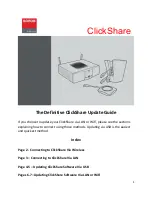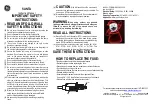
MODULE REPLACEMENT
1.
Disconnect the 3 pin molex connector from module.
2.
Disconnect the audio, video, and RF connectors from back of module.
3.
Remove module by sliding the unit out the front of the chassis.
4.
Insert replacement module into chassis.
5.
Reconnect the 3 pin molex connector and audio, video, and RF
connectors to the rear of module.
6.
Set channel frequency and level controls as described in
installation procedures.
OPERATION AND CARE
Do’s & Don’ts
•
Always operate in a cool well-ventilated environment.
•
Always provide a stable, conditioned power source.
•
Heed all safety warnings and obey all environmental and electrical oper-
ating requirements.
•
To clean, use a damp cloth only and clean only with mild soap.
•
Do not use solvents or harsh detergents.
•
Do not use this product for purposes other than intended.
HEADEND/DISTRIBUTION INTERFACE
PICO MACOM
recommends connecting the headend components in the
following manner:
Each of the modulators, signal processors or strip amplifiers output are con-
nected to a combining network. Either a PHC-12G or a PHC-24G headend
combiner may be used to accomplish this purpose. When demodulators are
used, the baseband audio and video outputs are connected to the baseband
audio and video inputs of a modulator.
The PHC-12G or PHC-24G passive headend combiner consists of two rows
of directional couplers combined by a hybrid splitter. Normally, the odd chan-
nels are combined on one row while even
channels are combined on the other row of
directional couplers for maximum isolation.
The output of the combiners may be
connected to the input of a launch amplifier
such as a CA-30RK550 or CA-30RK1000. The
output of the amplifier is connected to the
main distribution line.
A 24 channel system hook-up is shown. (The
same combining result may be accomplished
by using a single PHC-24G). The two PHC-
12G outputs are combined via a two-way
splitter, which is connected to a CA-30RK1000
launch amplifier. The input levels to the com-
biner, whether from a modulator, signal
processor or a strip amplifier, must be at the
same amplitude.
MPCD
Installation Procedure
7
Rev. 05/03
Ph:800-421-6511
www.picomacom.com
Installation
Use a small plastic screwdriver to make required selection of switches
and buttons
1.
Align the top and bottom edge of module with the guide channel
in chassis.
2.
Slide module into chassis.
3.
Connect the 3 pin molex power supply connector.
4
. Connect a cable between the module RF input connection and
the source antenna or CATV connection.
5.
Connect cables from the module baseband video and audio
outputs to the audio and video input connectors of video/audio
modulator.
6.
If needed, press the CATV/ANT button to select between cable
TV (HRC, IRC and STD) and off-air channel assignments.
7.
Select the desired channel by pressing either channel button
adjacent to the arrows on front panel.
8.
When the desired channel is displayed, press the lock button
to lock input channel.
9.
If video output level requires adjustment, connect an oscillo-
scope to the video output connector and adjust video control
on front panel to 1volt p-p.
10.
If audio output level requires adjustment, connect an oscillo-
scope to the audio output connector and adjust audio control
on front panel to 0.5 volts p-p.
11.
After adjustments have been made, reconnect all connections.


























